GYNMNOSPERMS
(Ohio’s native and nearly-native conifer genera)
CONIFER REPRODUCTION
Gymnosperms are the “naked seeded” plants. They do not produce flowers, hence there are no ovaries completely enclosing ovules, and no fruits completely enclosing seeds. These are the cone-bearing plants, producing uncovered (naked) seeds in pairs at the base of female cone scales. Gymnosperms are woody plants, mainly needle-leaved evergreen trees that are in most instances monoecious (bearing unisexual structures on different parts of the same plant).
Here’s a pine (alas, a cultivated species, Austrian pine, Pinus mugo) that demonstrates the signature features of conifer reproduction. First, see a branch with pollen-producing cones.
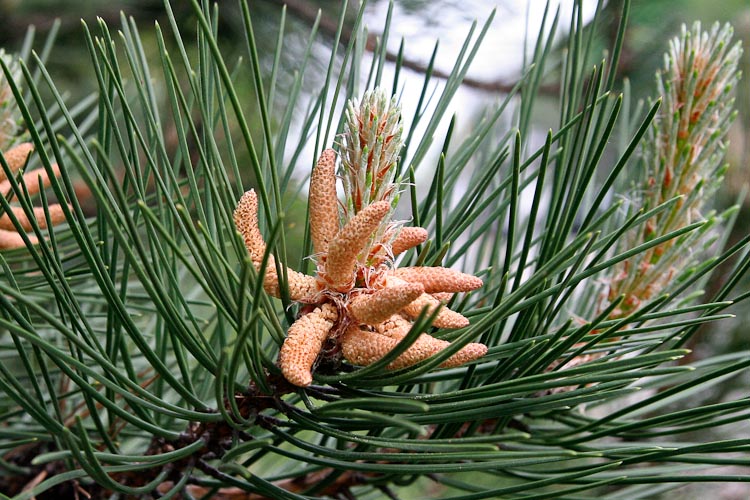
Pollen-producing cones of Austrian pine.
Uniquely among our conifers, pine (genus Pinus) reproduction takes two years. During the beginning of the first year, at the same time that the male cones are sending clouds of yellow pollen into the air (ha-choo!), the newly-formed female cones are teeny-teeny tiny-tiny little things, barely distinguishable from ordinary branch tips.
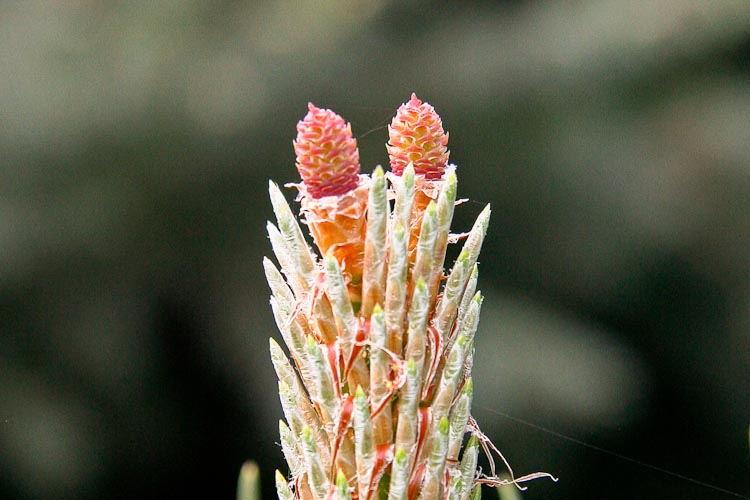 Austrian pine ovulate cone at beginning of year one.
Austrian pine ovulate cone at beginning of year one.
Pollination occurs at this stage.
Some lucky pollen grains that happen to land on a drop of sticky fluid produced by the female (ovulate) cone get drawn into the cone, where they remain dormant for a year. During that year, small multicellular gametophytes –two per cone scale –develop within the cones. These 1-year old cones are medium-sized, greenish, and tightly closed.
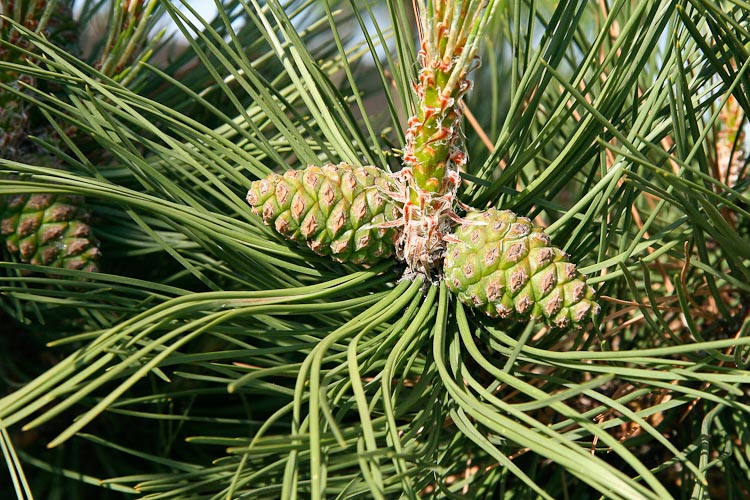
Austrian pine cones at beginning of 2nd year.
Pollination occurred the year before. Fertilization occurs now!
At the beginning of the second year, sperm from the pollen grains that were captured one year ago fertilize the egg in the gametophytes at the bases of the scales, which develop into winged seeds in pairs at the bases of the scales. The cone scales separate and the winged seeds drift away at the end of the second year. By the time we tend to notice them, the familiar dark dry woody pine cones have released their seeds, although careful examination sometimes reveal a few stuck seeds remaining. Thus in pines there’s an interesting peculiarity in timing: pollination and fertilization occur an entire year apart!
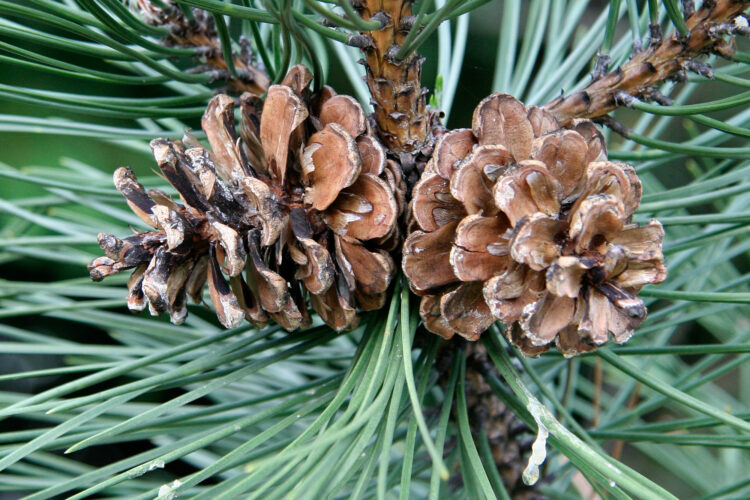
Austrian pine at end of 2nd year.
Cone scales have spread apart and released the winged seeds.
Below, see a very informative branch of Virginia pine that shows all 3 life stages of ovulate pine cones. On the left is a cone that originated at the beginning of the current season (pollination has taken place, but not fertilization). A little left of center is a one-year old cone (fertilization has just occured within a recently formed female gametophyte). On the right is a 2-year old cone that has recently released its seeds.
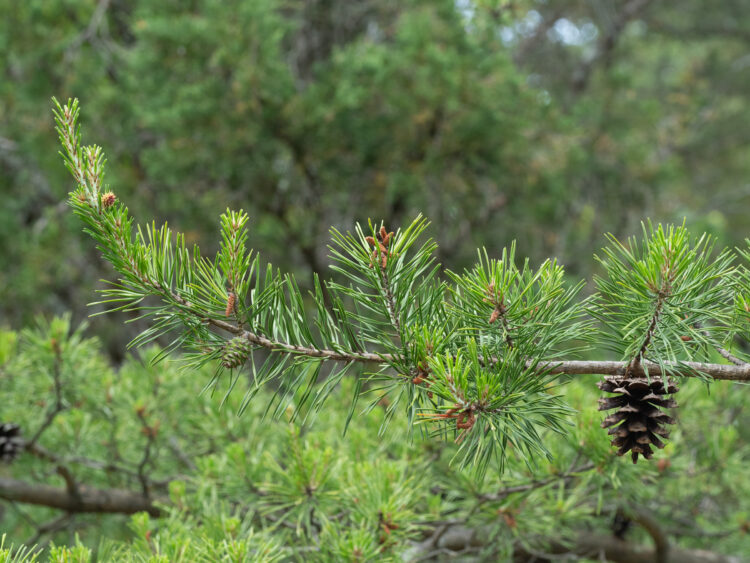
Virginia pine branch with all 3 ages of cones.
CONIFERS LECTURES
In Summer, 2020 the OSU Ohio Plants course was entirely online (taught remotely). The instructors put together video versions of the lectures that were traditionally done in-person and placed them on YouTube. This material below is an aggregation of those lectures.
